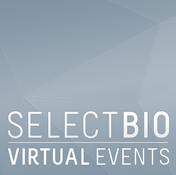Why Must the Origin of Stem Cells be Authenticated?
John Masters, Professor, University College London
Cell misidentification is a continuing problem (see, for example, Nature 457, 935–936; 2009), with an estimated 15% or more of human cell lines not being derived from the claimed source. This means that billions of dollars have been wasted over the past 45 years on producing misleading or false data. Although a few progressive journals and funding bodies demand that stem and other cell cultures be authenticated, this practice needs to become standard and universal. Cross-contamination between human cell lines was first described in 1967, yet these same cell lines continue to be used in published studies under their false names and tissue attributions (see Nature Rev. Cancer 10, 441–448; 2010). The method used to authenticate human cells is called short-tandem-repeat (STR) profiling, and a standard released by the American National Standards Institute provides protocols (see go.nature.com/ cijups). The International Cell Line Authentication Committee (ICLAC) has produced helpful hints for testing authenticity (see go.nature.com/utig5g) and for incorporating authentication into good tissue-culture practice (see go.nature.com/jgip8v). A rapidly expanding list that already contains more than 400 misidentified cell lines is freely accessible (see go.nature.com/soppaj) so that anyone can check whether a cell line has already been identified as false. Also, the US National Center for Biotechnology Information is developing a database of reference STR profiles of human cell lines (see go.nature.com/edfmcj).
|
|

 Add to Calendar ▼2014-11-12 00:00:002014-11-13 00:00:00Europe/LondonAdvances in Stem Cell Research 2014 - Online EventAdvances in Stem Cell Research 2014 - Online Event in OnlineOnlineSELECTBIOenquiries@selectbiosciences.com
Add to Calendar ▼2014-11-12 00:00:002014-11-13 00:00:00Europe/LondonAdvances in Stem Cell Research 2014 - Online EventAdvances in Stem Cell Research 2014 - Online Event in OnlineOnlineSELECTBIOenquiries@selectbiosciences.com